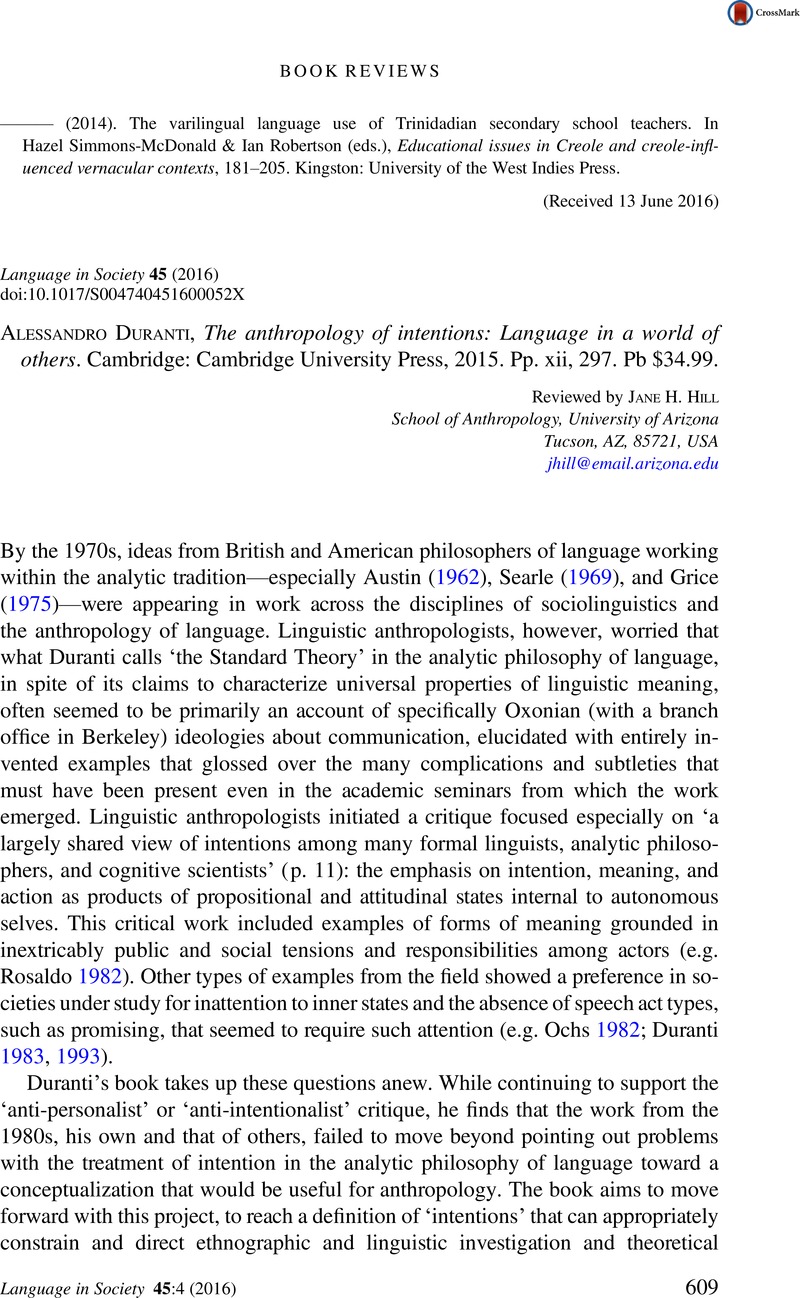No CrossRef data available.
Article contents
Alessandro Duranti , The anthropology of intentions: Language in a world of others. Cambridge: Cambridge University Press, 2015. Pp. xii, 297. Pb $34.99.
Published online by Cambridge University Press: 30 August 2016
Abstract
An abstract is not available for this content so a preview has been provided. Please use the Get access link above for information on how to access this content.

- Type
- Book Reviews
- Information
- Copyright
- Copyright © Cambridge University Press 2016
References
Duranti, Alessandro (1983). Intentions, self, and local theories of meaning: Words and social action in a Samoan context. Center for Human Information Processing Technical Reports
122:1–22.Google Scholar
Duranti, Alessandro (1993). Intentions, self, and responsibility: An essay in Samoan ethnopragmatics. In Hill, Jane H. and Irvine, Judith T. (eds.), Responsibility and evidence in oral discourse, 24–47. Cambridge: Cambridge University Press.Google Scholar
Goffman, Erving (1981). Forms of talk. Philadelphia: University of Pennsylvania Press.Google Scholar
Grice, H. Paul (1975). Logic and conversation. In Cole, Peter & Morgan, Jerry (eds.), Syntax and semantics, vol. 3: Speech acts, 41–58. New York: Academic Press.Google Scholar
Ochs, Elinor (1982). Talking to children in Western Samoa. Language in Society
11:77–104.Google Scholar
Rosaldo, Michelle Z. (1982). The things we do with words: Ilongot speech acts and speech act theory in philosophy. Language in Society
11:203–37.CrossRefGoogle Scholar


